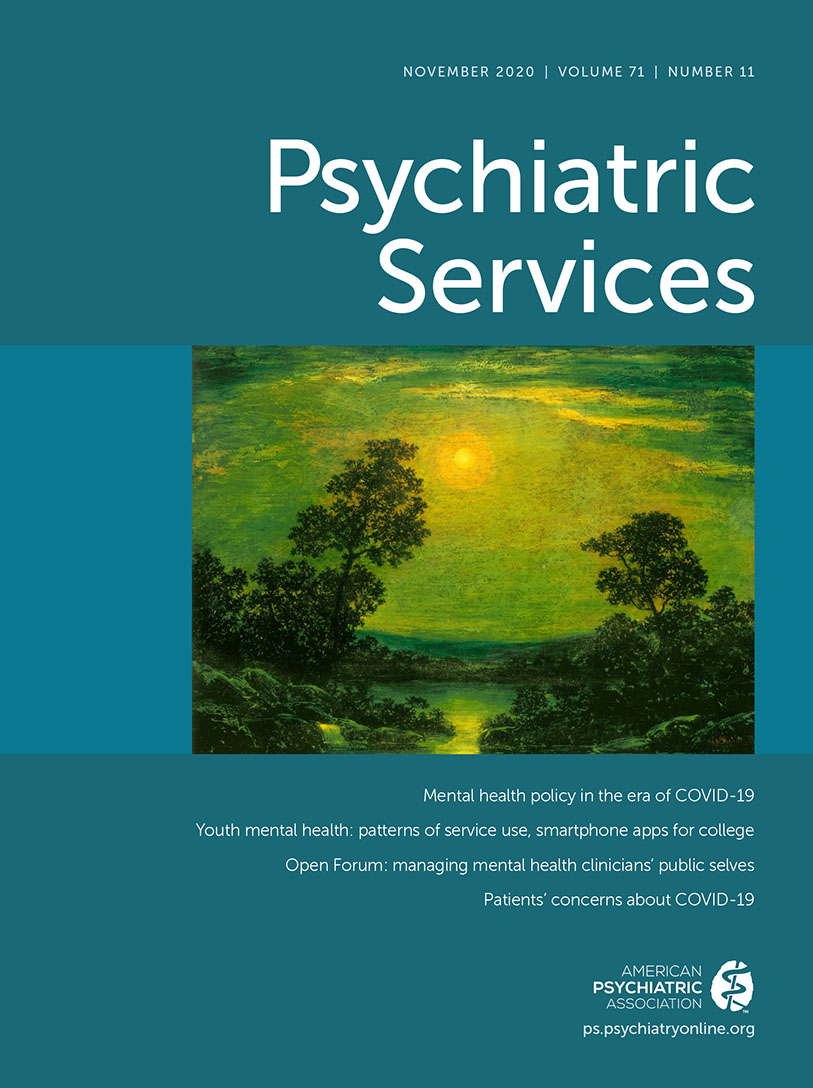Responding to a Population Mental Health Crisis
This issue includes a timely article by Costa et al. (1) about the effects of COVID-19 on persons living with mental illness. The brief report shares the results of an online survey conducted 3 weeks into the pandemic by the peer community platform ForLikeMinds. Although the response rate from the platform’s 12,000 members was relatively low (N=214, with 193 self-identifying as living with mental illness), the results were instructive. Of persons living with mental illness, 12% thought they were coping well with the pandemic, and 23% said they were coping poorly. Of particular concern, feelings of isolation were reported by 68%, and 57% felt they were less connected socially. Prominent were concerns about the continuity of treatment or potential losses of family supports. Now, 8 months into the pandemic, we recognize that the dimensions of such concerns have grown into a mental health crisis for the general U.S. population.
A primary theme highlighted in this survey was the value of social connection. Connection is critical to wellness and recovery, it is promising to note that most survey respondents indicated that they could connect with someone via phone, text, or social media. As the pandemic continues, decreasing the feelings of isolation becomes increasingly important. As mental health professionals, we should continue to explore how we can connect with our patients and help them consider and pursue ways in which they may safely foster connections with their family, friends, coworkers, and peers.
Over the past 8 months, whether in our office or behind a televideo screen, many of us have been privy to the exacerbation of symptoms described in the survey. The survey highlights the breadth of concerns that persons with mental illness (and probably many persons with no mental illness) face in the pandemic and points to the urgent need to mobilize community supports beyond our offices and screens. The emotional toll and expanse of the pandemic dictate that clinicians look beyond individual treatment models to help patients strengthen social connections, belongingness, and other community supports. Lessons can be learned from community-based substance use recovery organizations, such as Alcoholics and Narcotics Anonymous.
Such organizations have managed to transition to online formats during the pandemic. Peer, social, and other supports are key pieces of recovery approaches employed in substance use recovery and readily translate to the pandemic, where isolation, fear, and social distancing greatly exacerbate mental distress. We can urge patients to seek out peer and family support programs. Virtual platforms have proven to be an effective way of involving people living with mental illness and can be an ongoing solution to minimizing the disruption of care. It is clearly time that mental health professionals nudge patients toward group therapy and peer support groups and, if needed, help form such groups.
When we consider how we might provide additional support for our patients, it would be prudent to reflect on who our patients are. The pandemic has highlighted the disparities in the U.S. health care system—with death rates of Black and Latinx Americans being 34 per 100,000, in contrast to 13.8 per 100,000 for white Americans. It also has revealed a divide by economic status—in July 2020, the Los Angeles County Health Department and the Centers for Disease Control and Prevention reported a death rate of 51.2 per 100,000 for Americans in poverty and 13.1 per 100,000 for affluent Americans. Perhaps COVID-19 can act as the catalyst needed to help us broaden our perspective and consider how we might support those who do not seek care in our offices.
We should consider how population-focused wellness efforts might improve the mental health of our communities and increase connectedness during this time of social distancing. These efforts may include mental health providers coming together to support social determinants of health (including addressing poverty and increasing access to high-quality education, insurance coverage, and child care) and work on antiracism efforts. All of these are important interventions in promoting mental health and wellness for the U.S. population.
1 , : COVID-19 concerns among persons with mental illness. Psychiatr Serv 2020; 71:1188–1190Link, Google Scholar



